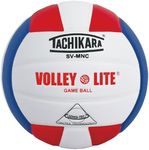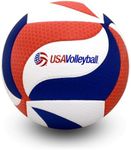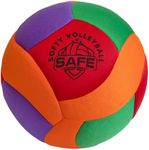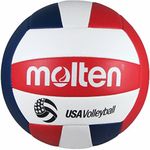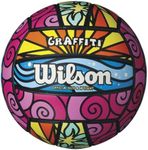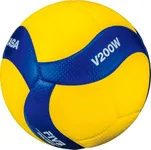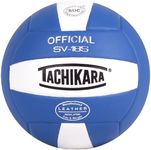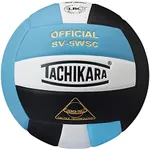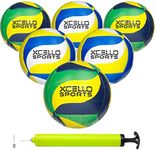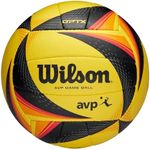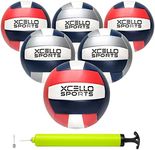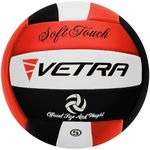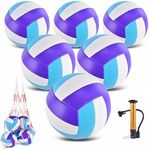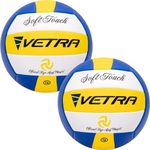Buying Guide for the Best Volleyball Ball For Girls
Choosing the right volleyball ball for girls involves understanding the key specifications that affect performance, comfort, and durability. It's important to consider the player's age, skill level, and the environment where the game will be played. By focusing on these factors, you can ensure that the ball you choose will enhance the playing experience and help develop skills effectively.SizeThe size of a volleyball ball is crucial as it affects how easily the player can handle and control the ball. Volleyballs typically come in two sizes: standard (size 5) and youth (size 4). Size 5 is the official size used in professional and high school games, while size 4 is slightly smaller and lighter, making it ideal for younger players. For girls, especially those under 12, a size 4 ball is recommended as it is easier to manage and helps in developing proper techniques.
WeightThe weight of the volleyball ball impacts how it feels during play and how it travels through the air. Standard volleyballs weigh between 260-280 grams, while lighter balls for younger players weigh around 230-250 grams. A lighter ball is easier to hit and control, making it suitable for beginners and younger girls. As the player grows and gains more strength and skill, transitioning to a standard weight ball will help in adapting to competitive play.
MaterialThe material of the volleyball ball affects its durability, grip, and feel. Volleyballs are typically made from synthetic leather or genuine leather. Synthetic leather balls are more affordable, durable, and water-resistant, making them suitable for both indoor and outdoor play. Genuine leather balls offer a softer touch and better grip but are usually more expensive and best suited for indoor play. For girls, especially beginners, a synthetic leather ball is a practical choice due to its versatility and durability.
Panel ConstructionPanel construction refers to how the panels of the volleyball are stitched or glued together. Volleyballs can have either stitched or molded panels. Stitched panels are more traditional and provide a softer feel, while molded panels offer better water resistance and durability. For girls playing in various environments, a ball with molded panels might be more suitable due to its resilience and consistent performance.
Indoor vs. OutdoorVolleyballs are designed differently for indoor and outdoor play. Indoor volleyballs are typically smoother and made to handle the controlled environment of a gym, while outdoor volleyballs are more durable and have a rougher texture to withstand the elements. If the player will be playing mostly indoors, an indoor volleyball is the best choice. Conversely, if the player will be playing on sand or grass, an outdoor volleyball will be more durable and provide better performance.
